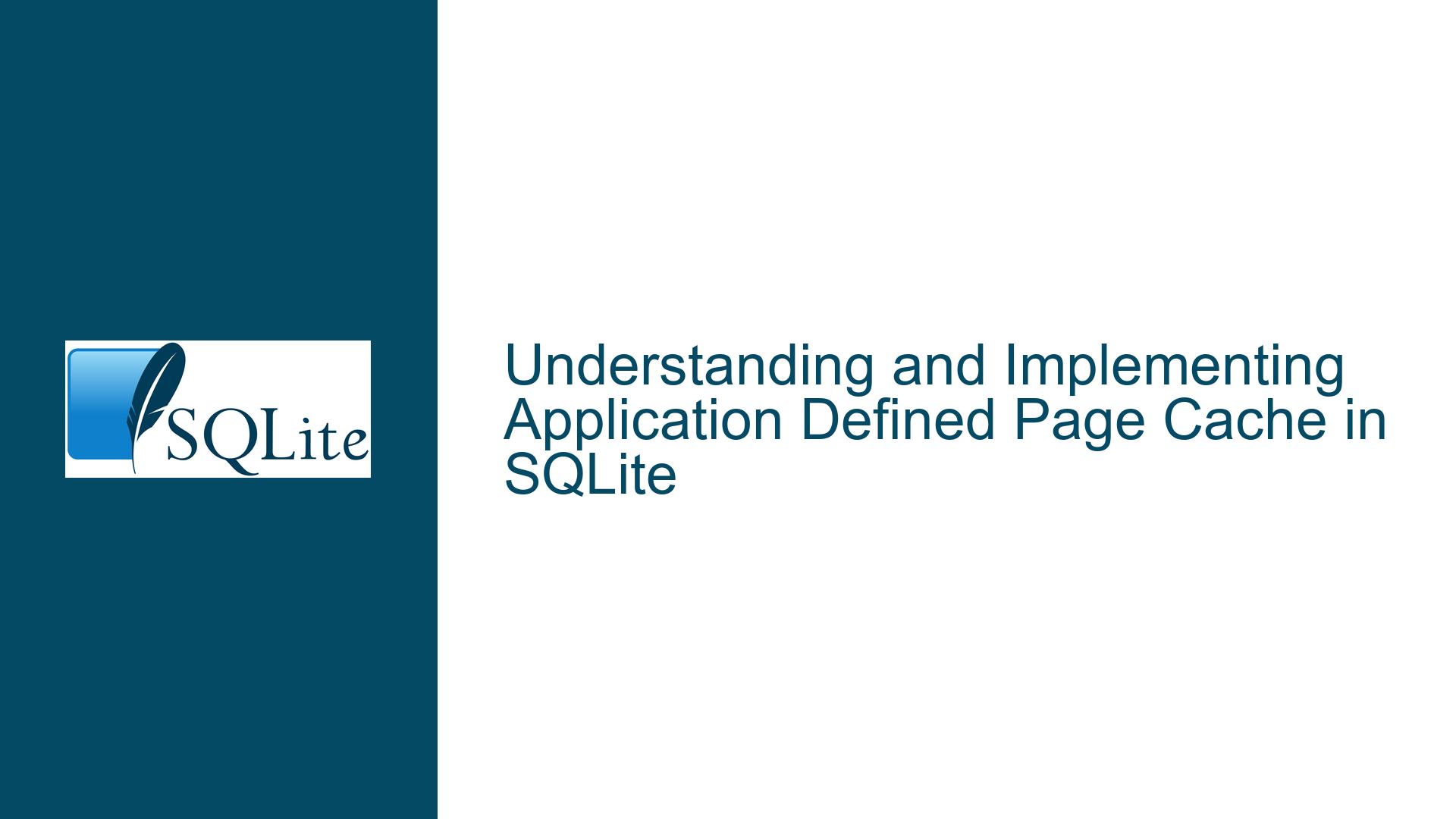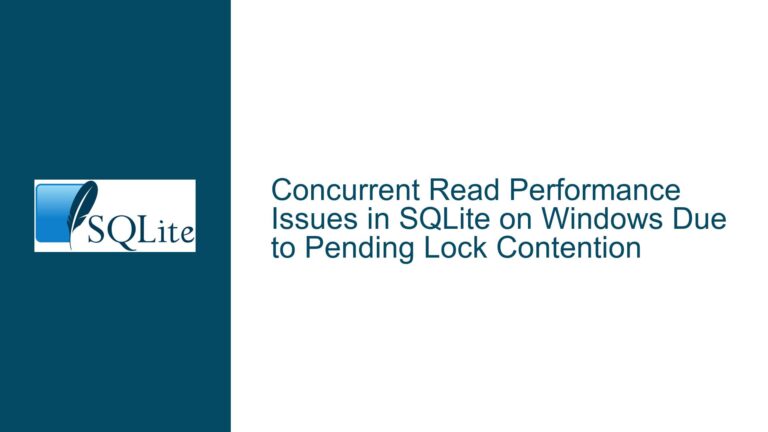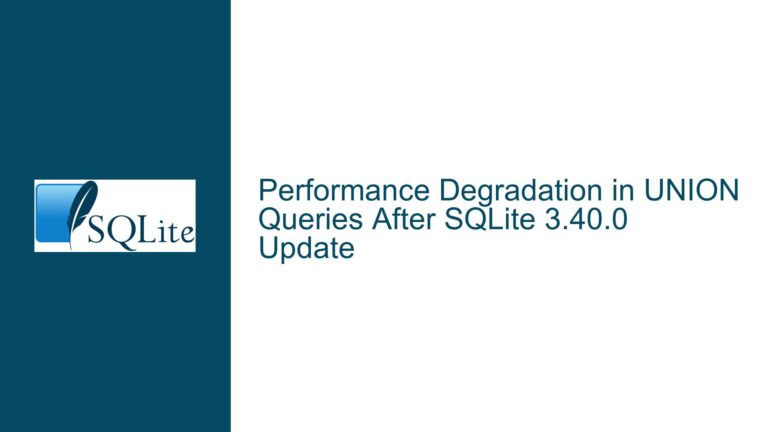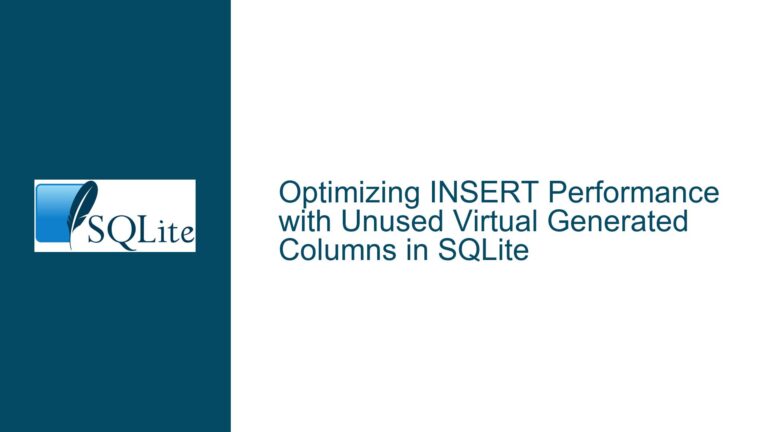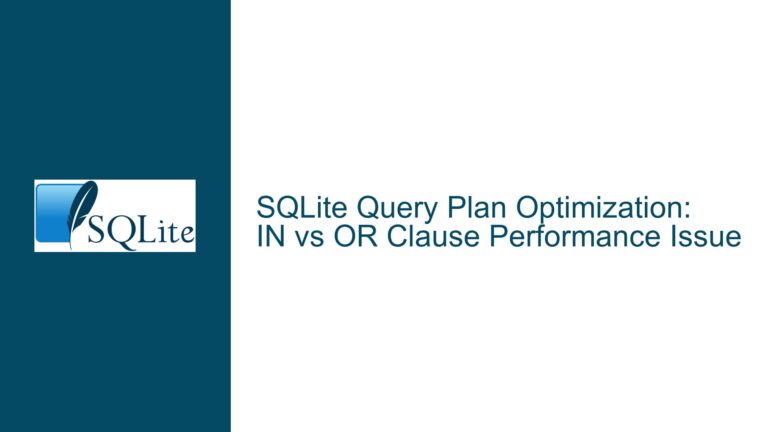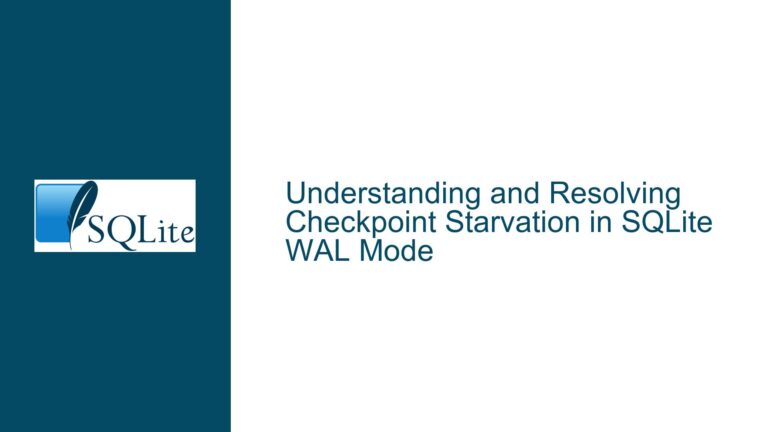and Implementing Application Defined Page Cache in SQLite
Issue Overview: Application Defined Page Cache (ADPC) and Its Misconceptions
The Application Defined Page Cache (ADPC) in SQLite is a specialized mechanism that allows developers to replace SQLite’s default page cache with a custom implementation tailored to specific application needs. The primary motivation behind ADPC is to provide fine-grained control over memory management, particularly in environments with unique memory constraints or specific performance requirements. However, there is a common misconception that ADPC inherently provides faster database read operations compared to SQLite’s built-in page cache. This misunderstanding often leads developers to explore ADPC as a performance optimization tool, which is not its intended purpose.
SQLite’s built-in page cache is highly optimized and handles most use cases efficiently. It manages the caching of database pages in memory, reducing the need for frequent disk I/O operations. The built-in cache is designed to be general-purpose, catering to a wide range of applications without requiring custom configuration. ADPC, on the other hand, is a niche feature intended for scenarios where the default cache behavior is unsuitable due to specific system constraints or unique application requirements.
The confusion arises from the assumption that ADPC can bypass the inherent latency of disk I/O operations. In reality, ADPC does not eliminate the need to read data from disk; it merely provides a way to manage how pages are stored in memory after they are read. The perceived "speed gain" from ADPC is often attributed to the ability to fetch pointers to already cached pages, which is a feature available in both the built-in cache and ADPC. Therefore, ADPC should not be viewed as a performance enhancement tool but rather as a customization option for specific use cases.
Possible Causes: Why Developers Consider ADPC and Common Pitfalls
Developers often consider implementing ADPC for several reasons, some of which are based on misconceptions about its capabilities. One of the primary motivations is the belief that ADPC can significantly improve database read performance. This belief stems from a misunderstanding of how caching works in SQLite. While caching can reduce the frequency of disk I/O operations, it cannot eliminate them entirely. ADPC does not provide a magical solution to bypass the physical limitations of disk access.
Another reason developers explore ADPC is the desire to optimize memory usage in resource-constrained environments. For example, embedded systems or mobile devices may have limited RAM, requiring careful management of memory resources. In such cases, ADPC can be used to implement a custom cache that aligns with the specific memory constraints of the system. However, this requires a deep understanding of both SQLite’s internal architecture and the target system’s memory management capabilities.
A common pitfall when implementing ADPC is the assumption that it can be used as a drop-in replacement for the built-in cache without significant modifications to the application code. In reality, implementing ADPC requires a thorough understanding of SQLite’s page cache interface and the ability to write custom code to manage cache operations. This includes implementing functions for fetching, storing, and evicting pages from the cache, as well as handling cache synchronization and concurrency issues.
Another potential issue is the lack of comprehensive documentation and examples for ADPC. While SQLite’s source code provides a reference implementation of the built-in cache, there are few resources available for developers looking to implement ADPC from scratch. This can make it challenging to understand the nuances of ADPC and how to integrate it effectively into an application.
Troubleshooting Steps, Solutions & Fixes: Implementing ADPC Effectively
To implement ADPC effectively, developers must first understand the specific use case that necessitates its use. ADPC is not a general-purpose performance optimization tool, and it should only be considered when the built-in cache is unsuitable for the application’s requirements. Once the need for ADPC has been established, the following steps can guide the implementation process.
Step 1: Familiarize Yourself with SQLite’s Page Cache Interface
The first step in implementing ADPC is to understand SQLite’s page cache interface. This interface defines the functions that must be implemented to replace the built-in cache with a custom cache. The interface includes functions for initializing the cache, fetching pages, storing pages, and evicting pages from the cache. Developers should study the src/pcache.c and src/pcache1.c files in the SQLite source tree to gain a deep understanding of how the built-in cache works and how to replicate its functionality in a custom cache.
Step 2: Define the Custom Cache Structure
The next step is to define the structure of the custom cache. This includes determining how pages will be stored in memory, how cache eviction will be handled, and how cache synchronization will be managed. The custom cache structure should be designed to meet the specific memory constraints and performance requirements of the application. For example, in a memory-constrained environment, the custom cache might use a least-recently-used (LRU) eviction policy to ensure that the most frequently accessed pages remain in memory.
Step 3: Implement the Required Cache Functions
Once the custom cache structure has been defined, the next step is to implement the required cache functions. These functions include:
- Cache Initialization: This function initializes the custom cache and sets up any necessary data structures. It should be called when the database connection is opened.
- Page Fetching: This function retrieves a page from the cache. If the page is not in the cache, it should be read from the database file and stored in the cache.
- Page Storing: This function stores a page in the cache. It should handle cache eviction if the cache is full.
- Page Eviction: This function removes a page from the cache. It should be called when the cache is full and a new page needs to be stored.
- Cache Synchronization: This function ensures that the cache is synchronized with the database file. It should be called when a transaction is committed or rolled back.
Step 4: Integrate the Custom Cache with SQLite
After implementing the required cache functions, the next step is to integrate the custom cache with SQLite. This involves registering the custom cache with SQLite using the sqlite3_config function. The custom cache should be registered before any database connections are opened. Once the custom cache is registered, SQLite will use it instead of the built-in cache for all subsequent database operations.
Step 5: Test and Optimize the Custom Cache
The final step is to test and optimize the custom cache. This involves running a series of tests to ensure that the cache behaves as expected and meets the application’s performance requirements. Developers should monitor cache hit rates, memory usage, and disk I/O operations to identify any potential bottlenecks or inefficiencies. If necessary, the custom cache should be optimized to improve performance or reduce memory usage.
Common Issues and Solutions
- Cache Thrashing: Cache thrashing occurs when the cache is too small to hold the working set of pages, resulting in frequent cache evictions and high disk I/O. To address this issue, developers should increase the size of the cache or implement a more efficient eviction policy.
- Cache Inconsistency: Cache inconsistency can occur if the custom cache is not properly synchronized with the database file. To prevent this issue, developers should ensure that the cache synchronization function is called whenever a transaction is committed or rolled back.
- Memory Leaks: Memory leaks can occur if the custom cache does not properly release memory when pages are evicted or when the cache is destroyed. To avoid memory leaks, developers should carefully manage memory allocation and deallocation in the custom cache implementation.
Conclusion
Implementing an Application Defined Page Cache in SQLite is a complex task that requires a deep understanding of SQLite’s internal architecture and the specific requirements of the application. While ADPC can provide benefits in certain scenarios, it is not a general-purpose performance optimization tool and should only be used when the built-in cache is unsuitable. By following the steps outlined above, developers can implement ADPC effectively and avoid common pitfalls. However, it is important to recognize that ADPC is not a silver bullet for database performance issues and should be used judiciously.
